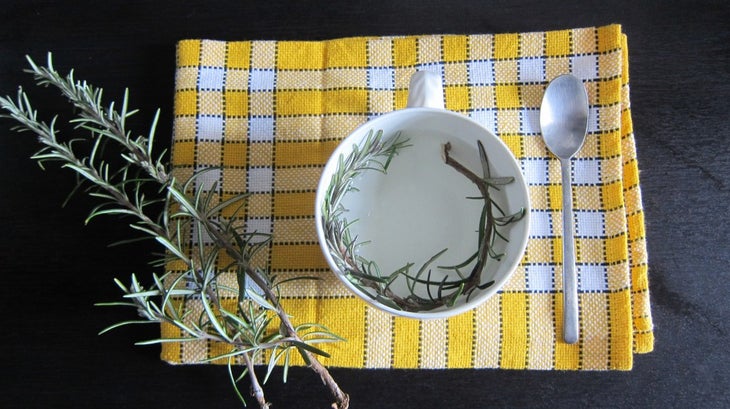Heading out the door? Read this article on the new Outside+ app available now on iOS devices for members! Download the app.

In France, there’s an after-dinner tradition called the tisane. Tisane is just another way of saying “tea,” and more specifically, “herbal infusion.” I’ve adopted the post-meal tisane ritual for a number of reasons, beginning with the fact that it tastes good, but I also love that I can use almost any herb for the job—even unexpected twigs and flowers yanked from my backyard.
Many of the herbs we use specifically for cooking can do double duty as a hot beverage. Rosemary is one of the best. When steeped in hot water, the essential oils seep out into your drink, but the flavor remains subtle. Rosemary has been used for centuries as a cure for indigestion and can help relieve symptoms of heartburn. Drinking it before you dine can also stimulate your appetite.
Sage is another herb that supports your digestive system and works to activate the appetite before sitting down to eat. I love its almost-smoky essence and the way just a few leaves of the fresh herb, crushed slightly to release their oils, adds so much flavor to a cup of steaming water.
Another unexpected plant that can be plucked straight from the garden and made into a mild-tasting tea with health-supporting benefits is lavender. Steeping a few flowers in a teacup gives you the added benefit of an at-home aromatherapy session, and lavender’s medicinal properties support a good night’s sleep.
Preparing your tisane requires just three items: A teapot (or cup), steaming water, and your fresh herb of choice. The amount of herb you use depends on how mild or strong you prefer the flavor. The more you use and the longer you steep it, the stronger the flavor—and the more powerfully you’ll experience the plant’s medicinal effects.
Experimenting with the herbs growing in your window planter box or backyard garden is a fun way to get a handle on their flavor profiles. It can also fuel you with ideas for new recipes. When in doubt about an herb, do some sleuthing before sipping; some plants have potent side effects and it’s best to play it safe when in doubt.
——-
Aurelia d’Andrea’s passion for travel is deeply intertwined with her love of food. Whether in Perth, Prague, or Phnom Penh, she always gravitates toward local markets in search of edible treasures, and takes pleasure in re-creating tasty travel memories at home in her tiny Parisian kitchen.